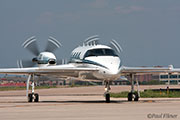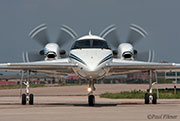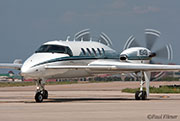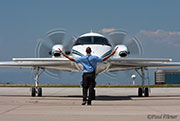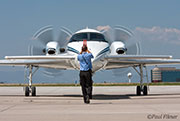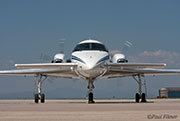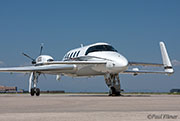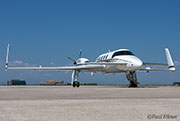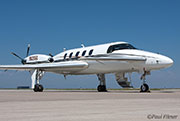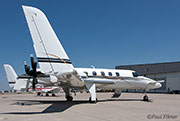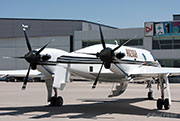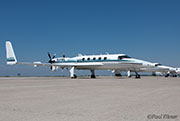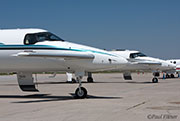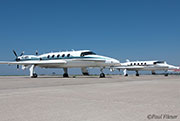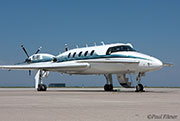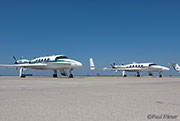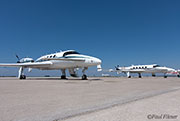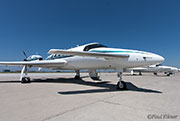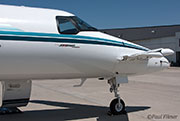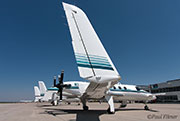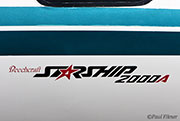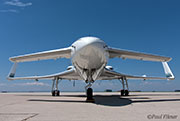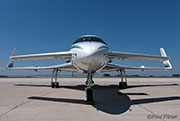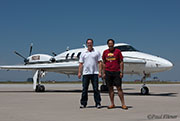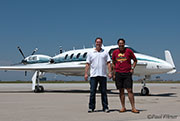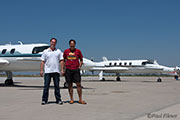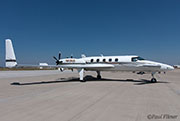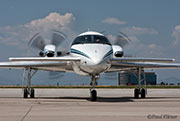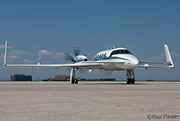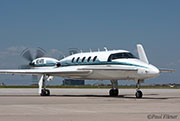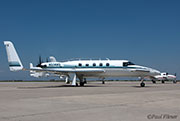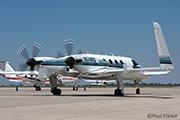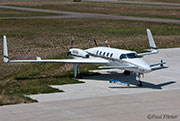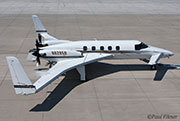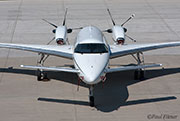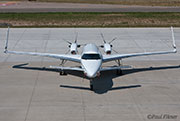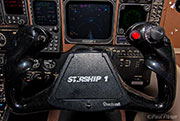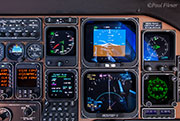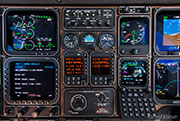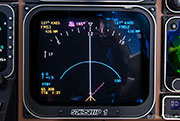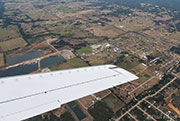These days, it's unusual to see an active Beech Starship, and with only five left out of the 53 manufactured, they are now spread very thinly across the USA.
The opportunity to see not just one, but a pair of active airframes together, outside of somewhere like Oshkosh, is even rarer, but that's exactly what happened earlier this month at Centennial Airport in Colorado.
N8285Q (NC-50) was already parked when I arrived at the XJet ramp, by invitation, so this gave me ample time to grab some shots before the next one arrived. N8285Q is based in Texas and is used to fulfil various defence contracts, so, operationally, stays pretty much out of the spotlight.
N514RS (NC-51), which arrived a little while later, is based in Aspen, Colorado and has had a higher profile career. It has often been utilised by Scaled Composites as a chase plane, for projects such as SpaceShipOne, Virgin's Global Flyer, and White Knight 2, plus the X-37.
The Starship was designed as a replacement for the Beech 200 King Air, and Burt Rutan's Scaled Composites was contracted to refine the design. It was the first commercial aircraft to use mostly carbon fiber composite materials throughout. A number of other firsts included the first certified all-glass cockpit and Flight Management System (FMS).
As the first certified composite aircraft, the FAA erred on the side of caution with the Starship, and Beechcraft was forced to strengthen both the fuselage structure and wing, making the aircraft heavier than originally designed. As a result, this pushed the aircraft over the FAA's 12,500lb limit which requires pilots to acquire a type rating.
The original specs would have allowed the Starship to achieve a maximum speed of 352 knots, carry a useful load of 4,599 lbs, stall at just 79 knots and deliver a range of 2,500 nautical miles. With the added weight, due to strengthening, these numbers fell to 338 knots, 4,170 lbs, 89 kts and 1,575 nm. Even so, the aircraft can still climb to an amazing 41,000 feet.
When the Starship was introduced in 1989, the US found itself in an economic recession and business aircraft were selling very slowly, so, initially, not many Starships were ordered. Raytheon scrapped most of the aircraft that were under their control, and purchased many others, in an attempt to ground the fleet; offering owners the chance of owning a business jet instead! Many were sent to Evergreen at Pinal Airpark for scrap, but Evergreen, to their credit, sold many back to owners as spares ships, and a number now reside at Marana Regional Airport (Avra valley), Arizona.
Later in the week, I had the opportunity to experience a flight in N8285Q (NC-50), on a one-way trip from Centennial in Colorado, to Addison in Texas.
The cockpit is very spacious, although, as in many aircraft, you still need to twist you body around to get into the front seats without knocking any levers. This particular aircraft, incidentally, is kitted out in a six seat executive layout.
The Starship is a very complex aircraft and the checklist is very lengthy, but luckily, most of this is incorporated into the FMS displays in the glass cockpit.
The first thing that strikes you after take-off is the quietness of the cabin and the short amount of runway we needed to get airborne, which on this day was showing a density altitude of around 9000 feet. In fact, it was so quiet in flight, I could hear the hobbs meter clicking!
I really got the impression that this was an aircraft built well before its time, and it was fantastic to see two together and grab a flight in one of them.
